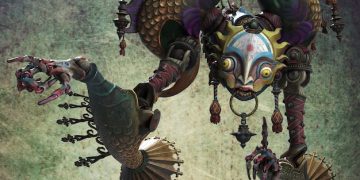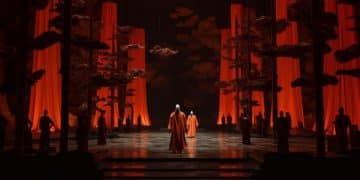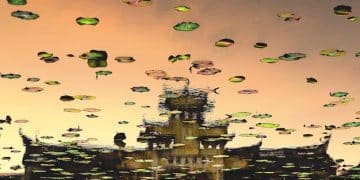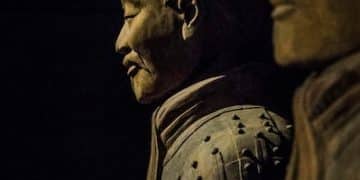Chinese Drama Genres: Xianxia to Modern Romance – The Ultimate Guide
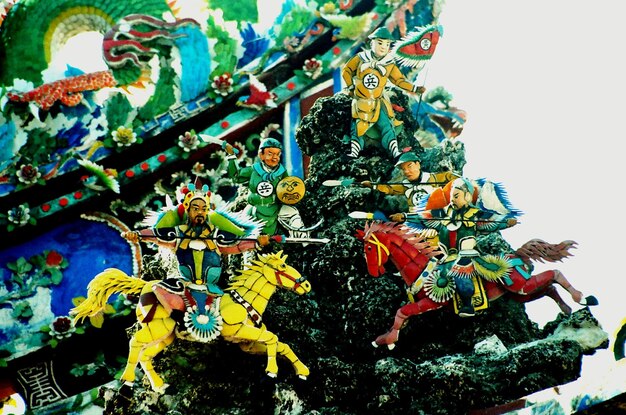
Advertisements
Chinese drama genres range from historical dramas like Xianxia, featuring fantasy and romance, to modern romance and slice-of-life stories, offering diverse narratives.
Dive into the captivating world of Chinese dramas with the ultimate guide to understanding Chinese drama genres: from Xianxia to modern romance. Explore the diverse stories, mythical worlds, and contemporary relationships that make C-dramas so popular.
Anúncios
Exploring the World of Chinese Drama Genres
Chinese dramas, often referred to as C-dramas, have gained immense popularity worldwide. Their unique storytelling, vibrant visuals, and diverse genres appeal to a broad audience. Understanding these genres is key to appreciating the richness of Chinese television.
From historical epics to modern-day romances, the range of topics covered in C-dramas is wide and captivating. This guide aims to explore the most prominent genres, offering an in-depth look at what makes each one special.
Anúncios
What Makes Chinese Dramas Unique?
Chinese dramas distinguish themselves through distinct cultural elements and storytelling techniques. Here are a few aspects that set them apart:
- Cultural Nuances: Traditional values, family dynamics, and social customs are often central themes.
- High Production Value: Many C-dramas boast stunning cinematography, elaborate costumes, and detailed sets.
- Diverse Genres: The breadth of genres ensures there is something for everyone, from fantasy lovers to romance enthusiasts.
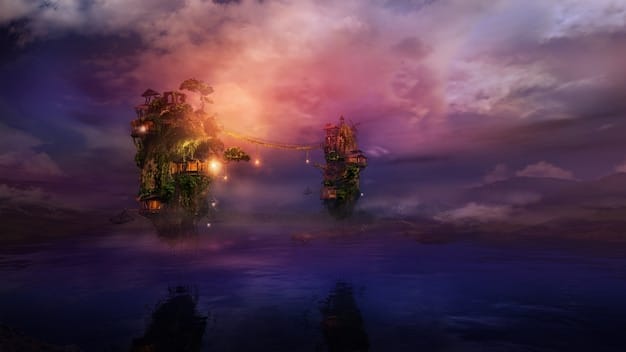
Whether you’re new to C-dramas or a seasoned watcher, this guide will help you navigate the exciting world of Chinese television. Below, we will explore a variety of genres ranging from historical to modern categories.
Xianxia: The Realm of Immortals and Magic
Xianxia, a genre deeply rooted in Chinese mythology, is known for its elaborate fantasy worlds and characters who strive for immortality through cultivation. It features a blend of martial arts, magic, and romance.
These dramas often depict the journey of mortals who seek to transcend their earthly forms and become celestial beings. The protagonists face countless trials, battle formidable foes, and develop profound relationships along the way.
Key Elements of Xianxia Dramas
Xianxia dramas are characterized by specific elements that define the genre:
- Cultivation: The process of refining one’s spiritual energy to achieve immortality.
- Magical Artifacts: Powerful weapons, tools, and talismans that aid characters in their quests.
- Mythical Creatures: Dragons, phoenixes, and other legendary beasts often play significant roles.
Popular Xianxia dramas include “Eternal Love” and “The Untamed,” both of which have garnered international acclaim for their captivating stories and visual appeal. Let’s continue to the next genre.
Wuxia: Martial Heroes and江湖
Wuxia dramas focus on martial artists in ancient China, emphasizing themes of chivalry, honor, and justice. The characters often operate outside the mainstream social structure in a world referred to as 江湖 (jiānghú) which translates to rivers and lakes.
These dramas are characterized by incredible displays of martial arts prowess, intricate fight choreography, and moral conflicts that test the heroes’ resolve. Unlike the Xianxia genre, Wuxia dramas generally lack supernatural powers. Instead they showcase physical skills and mastery of traditional weapons.
Core Themes in Wuxia Stories
Wuxia dramas explore several recurring themes:
- Redemption: Characters often seek to atone for past mistakes or avenge injustices.
- Brotherhood: Strong bonds of loyalty and camaraderie among martial artists are common.
- Sacrifice: Heroes frequently make self-sacrificing choices for the greater good.
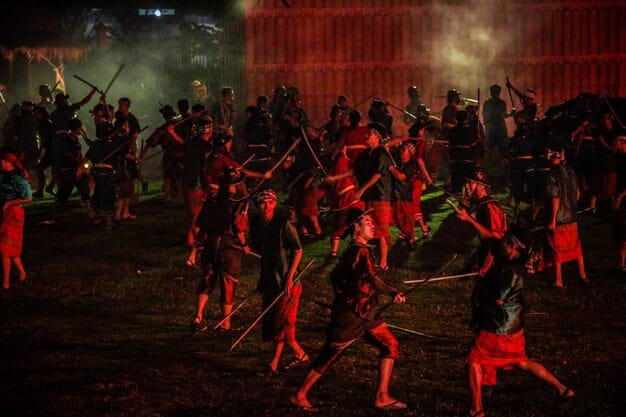
“Nirvana in Fire” is a notable Wuxia drama known for its complex plot, memorable characters, and masterful storytelling. Now let’s transition our guide to the next popular option.
Historical Dramas: Tales of Dynasties and Intrigue
Historical dramas offer viewers a glimpse into China’s rich past, depicting the lives of emperors, consorts, and court officials. These dramas often revolve around political intrigue, romantic entanglements, and power struggles within the imperial court.
Authenticity in setting, costumes, and customs is a hallmark of the historical drama genre. Many of these dramas are meticulously researched to ensure accuracy, providing viewers with an immersive experience.
Common Elements in Historical Dramas
Several elements are typically found in historical dramas:
- Court Politics: Complex schemes, alliances, and betrayals drive much of the plot in historical dramas.
- Romance: Forbidden love affairs and strategic marriages are often woven into the narrative.
- Historical Figures: The stories of real-life emperors, consorts, and generals are frequently dramatized.
“Empresses in the Palace” is a popular historical drama that explores the cutthroat world of the imperial harem, showcasing the cunning and resilience of women in ancient China. Let’s compare those themes to our next topic, Republican Era dramas.
Republican Era Dramas: Transition and Turmoil
Republican Era dramas are set in the early 20th century, a period of significant social and political change in China. This era saw the collapse of the Qing dynasty and the rise of new ideologies, creating a backdrop of turmoil and transition.
These dramas often depict the clash between traditional values and modern ideas, as well as the struggles of individuals caught between the old and the new. The settings range from bustling cities to rural villages, reflecting the diverse experiences of the Chinese people during this time.
Themes Commonly Explored in Republican Era Dramas
Republican Era dramas frequently address these themes:
- Social Reform: The push for modernization and the questioning of traditional norms.
- Nationalism: The rise of patriotic sentiment and the desire for a strong, independent China.
- Personal Freedom: Characters often seek to break free from societal constraints and pursue their dreams.
“The Disguiser” is a well-known Republican Era drama that combines elements of espionage, romance, and political intrigue. Next up, learn about more modern dramas with these next two topics.
Modern Romance Dramas: Love in the City
Modern romance dramas focus on the romantic relationships and personal lives of contemporary Chinese people. Set in urban environments, these dramas explore the challenges and joys of love, career, and family.
These stories resonate with audiences because they reflect the realities of modern life, addressing issues such as workplace pressures, economic inequality, and generational differences. The characters are often relatable, and their struggles mirror those of viewers.
What to Expect in Modern Romance Dramas
Expect these key elements in modern romance dramas:
- Workplace Dynamics: The intersection of career aspirations and romantic relationships.
- Family Expectations: The influence of family on personal choices and relationships.
- Urban Life: The portrayal of city living, with its opportunities and challenges.
“Love O2O” is a popular modern romance drama that explores the relationship between two university students who connect through an online game. Let’s not forget about the other modern day dramas in this next genre.
Family Dramas: Exploring Intergenerational Relationships
Family dramas delve into the complexities of intergenerational relationships, highlighting the bonds, conflicts, and expectations that shape family life in China. These dramas often tackle sensitive topics such as aging parents, sibling rivalry, and cultural clashes.
These stories offer a poignant look at the challenges and rewards of maintaining strong family ties in a rapidly changing society. The characters navigate personal struggles while striving to uphold traditional values.
Central Themes in Family Dramas
Family dramas often present these themes:
- Filial Piety: The duty to respect and care for one’s parents.
- Tradition vs. Modernity: The conflict between upholding traditional values and embracing modern ideas.
- Sacrifice: The willingness to put family needs above personal desires.
“Ode to Joy” is a notable family drama that follows the lives of five young women living in Shanghai, exploring their friendships, careers, and family relationships. And to recap it all, here’s a key summary of key points we presented.
| Key Point | Brief Description |
|---|---|
| ✨ Xianxia | Fantasy genre with cultivation and mythical beings. |
| ⚔️ Wuxia | Martial arts dramas focused on chivalry and justice. |
| 👑 Historical | Dramas set in historical periods, with court intrigue. |
| ❤️ Modern Romance | Contemporary stories about love and relationships. |
Frequently Asked Questions
▼
Xianxia is a fantasy genre rooted in Chinese mythology, featuring cultivation, magical beings, and the pursuit of immortality in elaborate worlds.
▼
Wuxia dramas primarily focus on martial arts and chivalry, while Xianxia incorporates more fantasy elements like magic and immortals.
▼
Republican Era dramas are set in the early 20th century, depicting the social and political changes in China during that period.
▼
Modern romance dramas often explore workplace dynamics, family expectations, and the challenges of urban life in contemporary China.
▼
Family dramas highlight intergenerational relationships, exploring cultural clashes and the significance of family ties in Chinese society.
Conclusion
From the mythical realms of Xianxia to the modern challenges depicted in family dramas, Chinese television offers a vast array of genres for every viewer. By understanding these genres, you can better appreciate the rich storytelling and cultural nuances that make C-dramas so popular worldwide.
